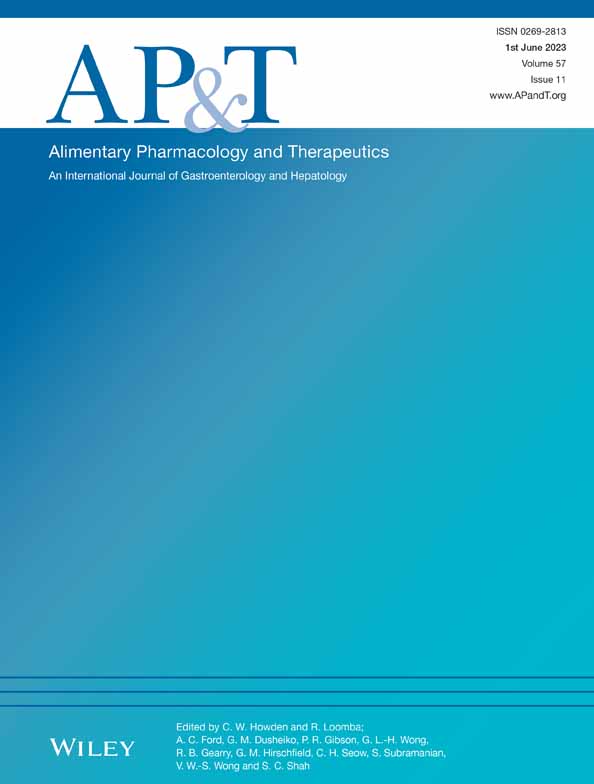Editorial: coeliac disease follow-up guided by gluten immunogenic peptides—are we there yet?
LINKED CONTENT
This article is linked to Garzón-Benavides et al papers. To view these articles, visit https://doi.org/10.1111/apt.17417 and https://doi.org/10.1111/apt.17492
In coeliac disease, a gluten-free diet (GFD) aims to improve, and ideally resolve, gluten-induced symptoms, immune activation and intestinal damage and minimise morbidity.1 But how do we know if our patients are following a ‘sufficiently strict’ GFD to achieve these goals? As regular direct assessment of duodenal histology is impractical, we rely on indirect measures of GFD adherence, such as dietary and symptom history, coeliac serology, and in trials, dietary adherence scores. However, dietary knowledge and practices will not necessarily reflect patients' real-world gluten exposure where cross-contamination is common.2 Similarly, symptomatology, serology and scoring systems lack accuracy in detecting gluten exposure and correlate poorly with mucosal healing.1
Sensitive assays that detect gluten immunogenic peptides (GIPs) in urine3 and faeces4 enable objective GFD monitoring as these excreted peptides reflect ingested gluten. They hold potential for research, patient care and trials, by revealing unsuspected gluten intake, confirming ‘true’ refractory coeliac disease and monitoring trial participants exposed to gluten or gluten-degrading drugs. Two consistent findings have emerged: (i) GIP testing is the most sensitive and specific approach to detect gluten transgressions,1 and (ii) gluten consumption is common, even in patients reporting strict GFD—as high as 89% when GIPs are assessed 3× weekly for 4 weeks5—and is mostly asymptomatic and unsuspected.6
How can GIP testing inform patient follow-up? Garzón-Benavides et al7 addressed this in a prospective study monitoring treated coeliac patients. Half of those with villous atrophy normalised over 12 months, consistent with an observed (Hawthorne) effect, but this improvement was not reflected by commensurate changes in coeliac serology, dietary adherence or symptoms. Only the number of positive urinary GIP samples predicted villous atrophy, although the absolute GIP levels were low (<6.25 ng/mL), highlighting the importance of exposure frequency over dose. The repeated absence of urinary GIP at two or more visits was significantly related to the absence of enteropathy (94%). Thus, the value of GIP testing is its high negative predictive value for villous atrophy conferred by a consistently negative test.7, 8
So are we ready to abandon follow-up biopsies and replace them with GIP assays? Not quite, as caveats and questions remain with their interpretation and performance. An important downside of the GIP assay's high sensitivity are positive readings that may not be clinically significant.9 For patients, this may cause unnecessary anxiety and an appreciation of the clinical context is required. A standardised protocol establishing sampling frequency/timing, use of urine or stool and GIP assay format is needed. While GIP excretion dynamics have been assessed in healthy volunteers,10 controlled data employing gluten challenge in coeliac patients are lacking. Urine samples are convenient, but stool may better reflect intermittent gluten intake as the gluten excretion window is longer, potentially up to a week. The ELISA assay is considerably more sensitive than the lateral flow kit10 but requires a capable laboratory. Sensitivity to detect barley and rye gluten is unknown. Ultimately, we look forward to studies that inform on how GIP testing in the clinic can improve our patients' GFD adherence and health outcomes.
AUTHOR CONTRIBUTIONS
Jason Allan Tye-Din: Conceptualization (lead); investigation (lead); writing – original draft (lead); writing – review and editing (lead).
ACKNOWLEDGEMENTS
Guarantor of the article: Dr Jason A. Tye-Din.
Declaration of personal interests: JAT-D is funded by an NHMRC Investigator Grant. He has privatelyor via his institute been a consultant or advisory board member for Anatara, Anokion, Codexis, Chugai, Equillium, IM Therapeutics, Mozart Therapeutics, Janssen, Novoviah and Vaccitech, has received honoraria from Takeda and research funding from Chugai, Codexis, ImmusanT Inc., Novoviah and Tillots Pharmaceuticals. He is an inventor on patents relating to the use of glutenpeptides in coeliac disease diagnosis and treatment.




